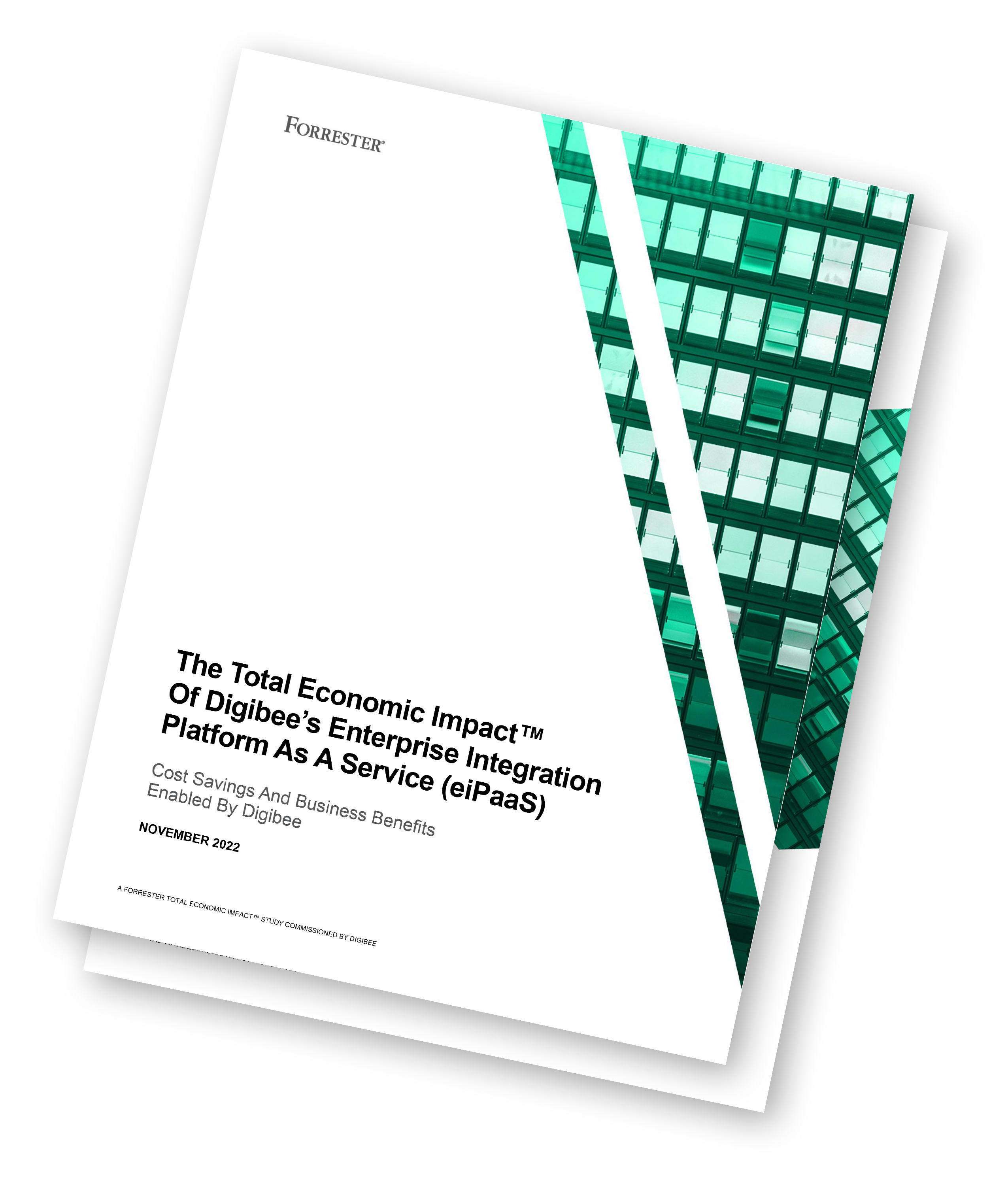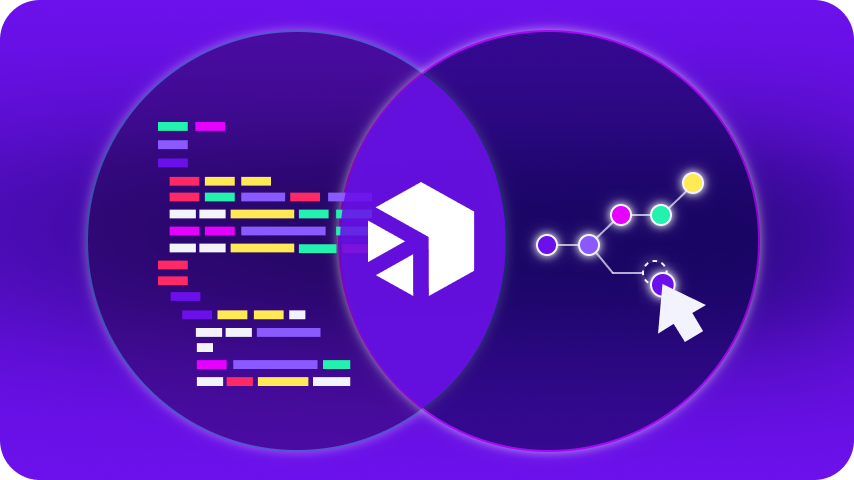February 14, 2023
In a recent engagement with Forrester Consulting, we asked the experts to put hard numbers behind the value Digibee delivers to our customers. The result? The Total Economic Impact™ Of Digibee’s Integration Platform as a Service (eiPaaS) report1, a detailed examination that quantifies the upside of Digibee’s eiPaaS technology.
In providing context to the research, Forrester conducted interviews with existing Digibee customers, taking what they learned and using it to create a composite customer: a financial services organization that we’ll call FinCo. This blog post explores in detail the total economic impact afforded to FinCo after implementing Digibee.

The Value of Enterprise Integration
Enterprise integration means a lot of things to a lot of different industries. For manufacturing, the connection of disparate systems and data provides a comprehensive view of the operation for real-time oversight, which in turn optimizes productivity and time to market.
Within retail, enterprise integration enables a composable tech infrastructure, allowing the retailer to quickly adopt new innovations that support and enhance digital customer experiences.
In financial services (FiServ), enterprise integration supports the evolution of the business, especially important within a sector where legacy infrastructure is often a hindrance to progress. By connecting the old with the new, a FiServ organization can easily keep pace with, and often lead, within its market space.
Unlike other industries, the regulatory landscape for FiServ is especially complicated. For example, within the US–and depending upon the type of FiServ–the business may need to provide dedicated oversight relative to anti-money laundering (AML), know your customer (KYC), know your business (KYB), and other rules.
Additional considerations include application and data security, with the company responsible for risk reduction associated with software development life cycle (SDLC), data management, access handling, patch management, and others. These issues become even more complicated when you layer in third party risk management that extends to service providers, partners, and other strategic relationships.
Tracking so many moving pieces is extremely difficult. Doing it in real-time to ensure a real-time response requires a level of connectivity that enterprise integration can easily support.
FinCo Company Profile
The composite customer featured in the independent economic impact analysis–FinCo–is a global financial services company. The organization supports two different models: B2B and B2C, providing sales, service, and support to millions of business and consumer customers.
With a strong brand and global operations, the business employs 20,000 people and generates annual revenue of $5 billion.
Prior to Digibee, FinCo’s existing integration strategy relied upon point-to-point solutions that used custom code. The work was supported by six developers (FTEs) that spent 50% of their time building and maintaining integrations.
FinCo Integration Challenges
The point-to-point integration model was cumbersome and presented a number of common challenges:
- Missed project delivery deadlines
- Inability to manage complex integrations
- Transaction volumes exceeded the capabilities of the in-house system
To resolve these challenges, FinCo needed to increase capacity to complete more integrations at a faster rate. Instead of a point-to-point DIY solution, the company wanted to employ a modern integration strategy so it could more easily handle complex integrations. FinCo also wanted to leverage the flexibility of a cloud-based integration platform versus an on-premises solution.
Total Economic Impact with Digibee
Forrester Consulting quantified Digibee’s value to FinCo based on a range of benefits:
- Developer efficiencies: building and maintaining integrations
- Cost savings: reduction in IT labor, hiring less experienced developers
- Internal business user efficiencies
- Revenue from faster time to market with new products and services
Once Digibee was implemented, FinCo experienced immediate returns. For example, increased developer efficiencies. Prior to Digibee, the number of hours FinCo spent building a single integration averaged 886 hours. In Year 1 with Digibee, this decreased 50% to 443 hours. In Years 2 and 3 the average dropped even further to 222 hours, for an overall efficiency increase of 75% versus the legacy point-to-point solution.
Overall, FinCo realized significant savings, operational efficiencies, and IT cost reductions with Digibee:
ROI: 232%
Return on Investment (ROI): Expected return in percentage terms. Calculated by dividing net benefits (benefits less costs) by costs.
Benefits PV: $5.94M
Present Value (PV): Present or current value of cost and benefit estimates given at an interest rate.
NPV: $415M
Net Present Value (NPV): Present or current value of (discounted) future net cash flows given an interest rate (the discount rate).
Payback: <6 months
Payback Period: The breakeven point for an investment. This is the point in time at which net benefits (benefits minus costs) equal initial investment or cost.
Digibee’s enterprise iPaaS for Finance
As detailed in the Forrester study, Digibee’s enterprise integration platform increases the productivity (building and maintenance) of developers and IT professionals. The low-code Digibee platform allows junior developers to do the work previously relegated to senior developers.
Digibee streamlines and reduces the cost of the entire development process and, along with an industry-leading enablement delivery model, sets up customers to adopt an eiPaaS autonomously and with ease.
For more information, read The Total Economic Impact of Digibee’s Integration Platform as a Service (eiPaaS) report, or contact us for a demonstration of the Digibee eiPaaS.
1 A commissioned study conducted by Forrester Consulting on behalf of Digibee














